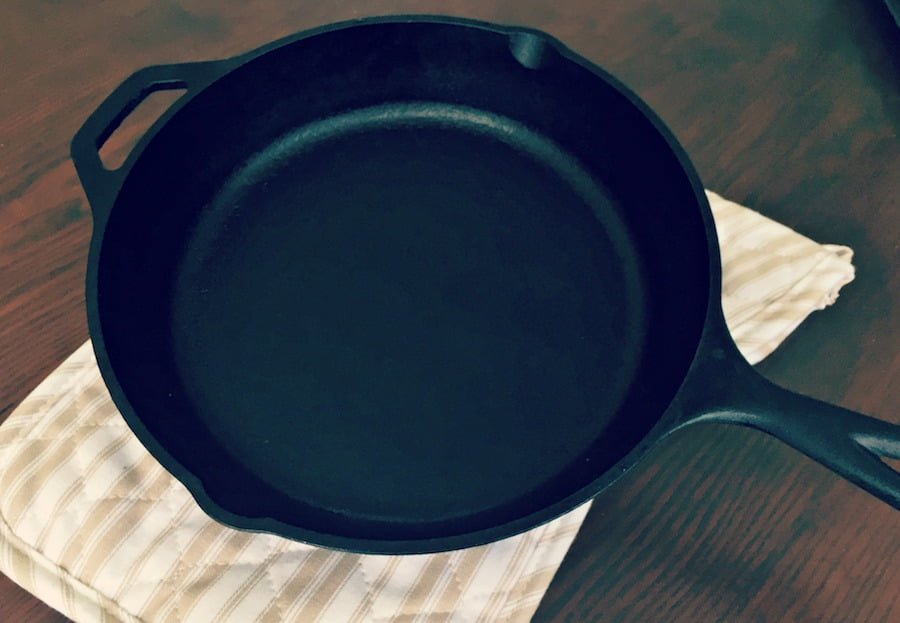The How and Why of Seasoning Cast Iron
 One of the staples of kitchens everywhere for centuries, cast iron skillets have been around a long time… and for good reason.
One of the staples of kitchens everywhere for centuries, cast iron skillets have been around a long time… and for good reason.
They’re durable, easy to use, easy to clean, and, let’s face it, there is something special about the taste of food prepared in a cast iron skillet. Especially if your family loves camping out and cooking over a campfire. If a cast iron skillet is properly cleaned and seasoned, it can easily become a family heirloom. I have a small one my great aunt used to bake cornbread that I wouldn’t trade for anything.
Seasoning is the process of treating the cast iron with oil and heat to keep it from rusting and corroding. After all, it is made of iron.
How to season your cast iron pan
You’ll need:
- Your cast iron skillet & oven
- Aluminum foil
- Mild dish soap
- Stiff brush or a scrubbing sponge (not steel wool)
- Clean dry cloth (preferably cotton) or paper towels
- Canola oil or vegetable oil
Directions:
- First, place a sheet of aluminum foil on the rack below the center rack of your oven.
- Preheat the oven to 325° F.
- Next, wash the skillet with warm, soapy water and sponge or brush.
- This will be probably be the last time you use soap on your cast iron skillet unless something really gets baked on that won’t come off with just hot water and scrubbing.
- Try coffee grounds for any stuck-on or stubborn bits of food.
- After washing and rinsing well, dry your skillet completely.
- Now, use your paper towels or cloth to apply a thin coat of canola oil or melted vegetable oil to both the inside and the outside of your skillet.
- Place the skillet upside down on the center rack in your oven. The aluminum foil you placed in there earlier will catch any oil that drips off your skillet.
- Bake for one hour.
That’s it. Now your skillet is seasoned.
You’ll need to season it at least three or four times a year… or after every time you have to wash it with soap if something bakes on.
Why you should season cast iron
Cast iron skillets are made of iron. Iron is more porous than it appears to be and when it’s exposed to moisture and oxygen, the moisture sinks into those pores and causes it to rust and corrode. When you season a cast iron skillet, the oil sinks into those same pores and, as skillet and oil are both heated, the oil oxidizes inside the pores and protects the iron from the corrosive effects of any moisture.
It’s a little more work than the run of the mill stainless steel but it’s definitely worth it for a skillet that will provide so many delicious meals and could very well be passed down through generations.

